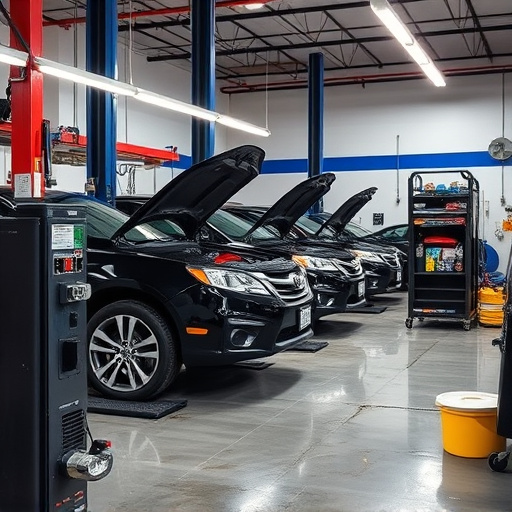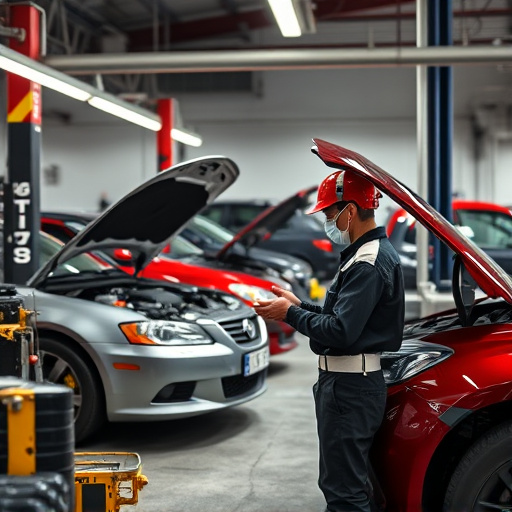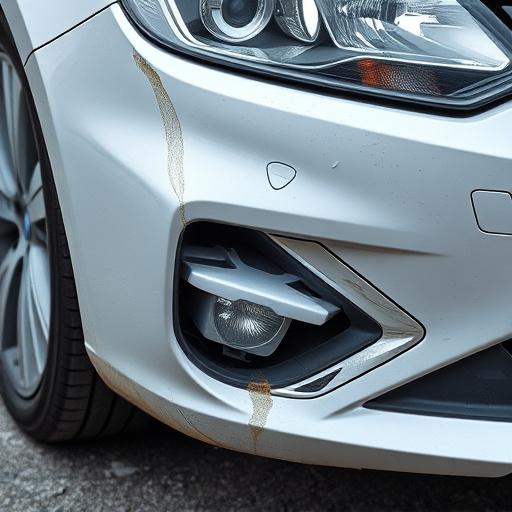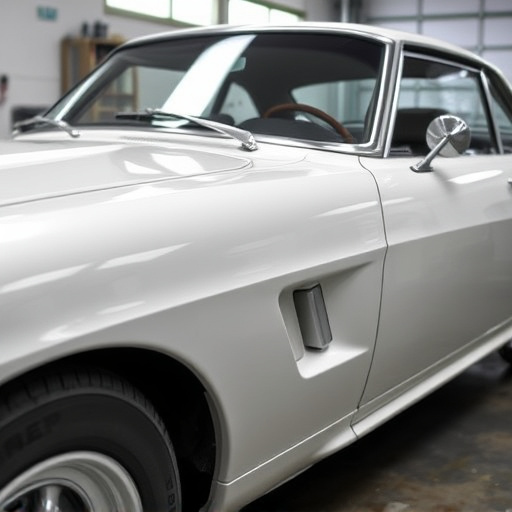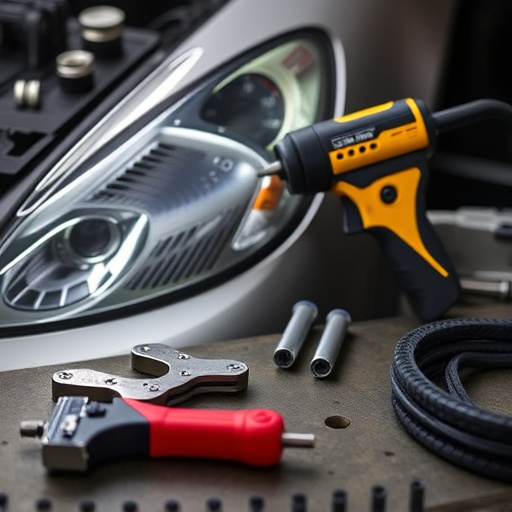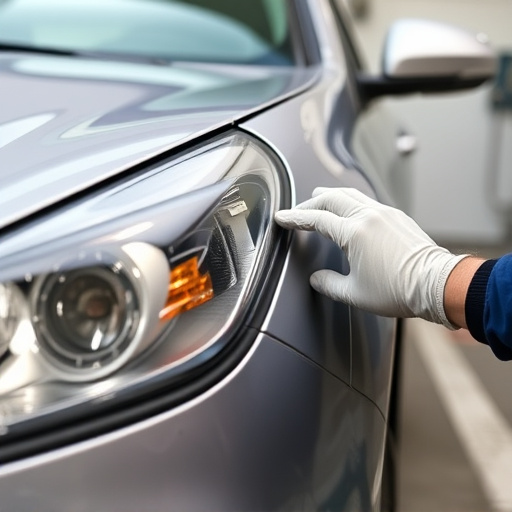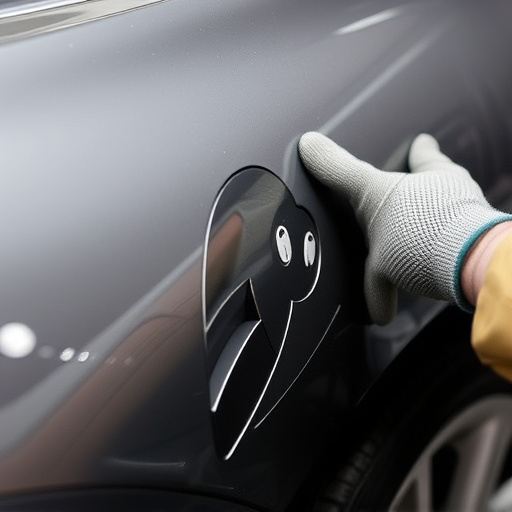The Mercedes brake assist system requires regular recalibration for optimal safety and performance. Factors like collisions or wear necessitate this process, ensuring sensors accurately detect speed and distance during emergency braking. Trusted collision centers or tire services use advanced tools to calibrate sensors, hydraulic pressure, and signals, while cost-effective alternatives like paintless dent repair maintain system integrity. The meticulous process involves inspecting and calibrating components using Mercedes service manuals as guides.
Mercedes’ advanced Brake Assist system plays a crucial role in enhancing auto brake emergency features, ensuring driver and passenger safety. This article delves into understanding the intricate Mercedes brake assist system, identifying moments when recalibration becomes necessary, and providing effective steps for precise calibration. By learning about these aspects, you’ll be better equipped to maintain optimal braking performance, thereby enhancing overall vehicle safety. Focus on Mercedes brake assist recalibration is key to keeping your vehicle’s emergency brakes responsive and reliable.
- Understanding Mercedes Brake Assist System
- When Recalibration is Necessary
- Effective Steps for Brake Assist Calibration
Understanding Mercedes Brake Assist System

The Mercedes Brake Assist System is a crucial component of the vehicle’s emergency braking features. This sophisticated technology works by monitoring driving conditions and detecting potential collision risks. When an impending crash is sensed, the system actively intervenes to apply the brakes, helping drivers stop safely in the event of unexpected hazards or sudden stops. It’s designed to react faster than human reflexes, making it a vital safety feature for Mercedes vehicles.
Mercedes brake assist recalibration plays a significant role in maintaining the effectiveness of this emergency braking mechanism. Regular calibration ensures that sensors accurately gauge speed, distance, and other factors critical to optimal braking performance. This process aligns with the vehicle’s computer system, allowing the brakes to respond swiftly and precisely during critical situations. It’s recommended that drivers visit a trusted collision center or tire services provider for periodic recalibration, ensuring their Mercedes’ emergency braking features remain in top form.
When Recalibration is Necessary

Over time, various factors can impact the precision and effectiveness of a Mercedes brake assist system, necessitating a recalibration. Such situations often arise due to vehicle collisions or severe braking incidents, as well as normal wear and tear on components. Even minor fender benders or rear-end collisions can disrupt the delicate balance within the brake assist mechanism, requiring professional attention to restore optimal performance.
Mercedes brake assist recalibration is a specialized service offered by authorized body shop facilities. These shops employ advanced diagnostic tools to assess any discrepancies in sensor readings, hydraulic pressure, and computer signal transmission. By accurately calibrating these systems, vehicle collision repair experts ensure that the emergency braking features function seamlessly, enhancing safety and driver confidence. Moreover, for those seeking cost-effective solutions without painting or extensive body shop services, paintless dent repair techniques can also play a role in maintaining the integrity of the brake assist system.
Effective Steps for Brake Assist Calibration

Mercedes brake assist recalibration is a critical process that ensures your vehicle’s emergency braking systems function optimally. To achieve effective steps for this recalibration, begin by consulting your car’s service manual, specifically tailored for Mercedes models. This guide will walk you through the necessary procedures, which often involve advanced diagnostic tools to assess and adjust the system’s performance.
The process typically starts with a thorough inspection of the brake sensors and components to identify any defects or wear. Once identified, replacement parts, such as sensors or calipers, can be ordered from authentic Mercedes-Benz dealerships or reputable automotive repair services. Following the manual’s instructions, the next step involves calibrating the system using specialized tools, mimicking real-world braking scenarios. This might include adjusting pressure points and sensitivity settings to ensure precise response during emergency situations, much like how a classic car restoration specialist would meticulously refine every detail of an antique vehicle.
Mercedes brake assist recalibration plays a vital role in ensuring the optimal performance of auto brake emergency features. By understanding the system and knowing when recalibration is necessary, car owners can take effective steps to maintain their vehicle’s safety capabilities. Regular calibration ensures responsive and precise braking, enhancing road safety for both drivers and pedestrians alike.

